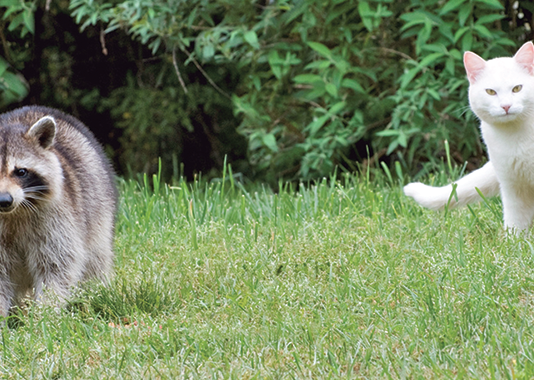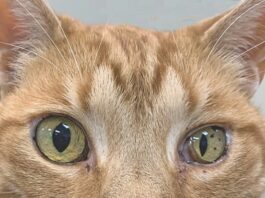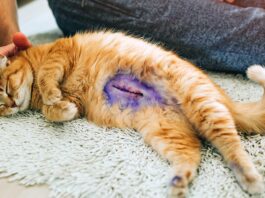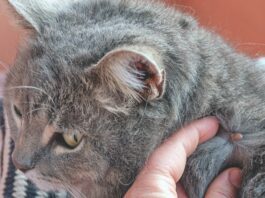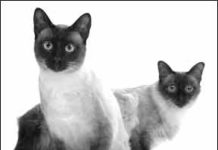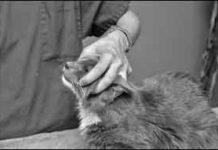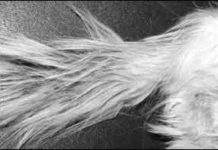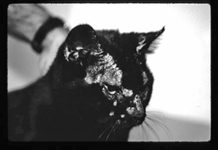Enhance His Coat, Improve His Health
A cat’s coat is his glory. Whether it’s soft, thick fur, long flowing hair or the suede-like skin of a hairless breed, the coat is more than an adornment. “The skin and hair buffer the animal from his environment — heat, cold, sun, wind — and make it more difficult for the skin to get infected,” says dermatologist William H. Miller, Jr., VMD, Medical Director of Cornell University’s Animal Hospital. “A dull, dry and unkempt coat doesn’t offer as much protection as a healthy one.” The message is inescapable: Enhance the coat and you enhance your cat’s well-being. The two most important elements to consider are diet and grooming.
You Can Prevent This Serious Disease
If you’ve resisted brushing your cat’s teeth, knowing how strenuously he’s likely to object, consider this: Periodontal disease, an often painful inflammation of the gums that can result in bone loss and destruction of oral tissue, is extremely common. In fact, it’s the most prevalent disease in companion animals and can pose serious health threats. “Periodontitis has been shown to play a role in such health problems as cardiovascular disease and diabetes,” says dental specialist Santiago Peralta, DVM, a Lecturer in Dentistry and Oral Surgery at the Cornell University College of Veterinary Medicine. This disease is, however, entirely preventable, according to the American Veterinary Dental College (AVDC). The best way to prevent periodontitis is by regular brushing and professional dental care.
Toward More Accurate Diagnoses of Sarcomas
Researchers at North Carolina State University are hoping for a breakthrough in a study designed to distinguish spontaneous sarcomas from injection site-associated sarcomas (ISASs). Each year about 22,000 cats in the U.S. appear to develop sarcomas, or malignant tumors, at the site of a vaccination or other injection, according to the Morris Animal Foundation, which is funding the study. The more aggressive ISASs often recur. Identifying a sarcoma in its early stages “could provide crucial information to help guide the owner and veterinarian as the best approach to treatment, and in the longer term, help us to understand why these tumors occur,” says Rachael Thomas, Ph.D., leader of the research team
Be Patient but Purposeful When Giving Medicine
You sigh with relief after the veterinarian examines your ailing cat and tells you that he’ll make a complete recovery. But then the veterinarian brings out a bottle of pills and begins giving you instructions on administering the right dose each day. Suddenly, you panic as you envision a struggle between you and your cat about pills or potions. It doesn’t have to be that way. Giving medicine can be easily accomplished by performing the correct steps in the right sequence; and here to help you master that procedure are Margaret Schnellinger, Licensed Veterinary Technician and LVT Team Leader at the Cornell University Hospital for Animals, and behaviorist Sophia Yin, DVM, in private practice in Davis, Calif. Dr. Yin is also the author of “Low Stress: Handling, Restraint and Behavior Modification of Dogs & Cats” (CattleDog Publishing), a resource with more than 1,600 how-to photographs for veterinarians and veterinary technicians.
Supracaudal Gland Hyperplasia
In teenagers, the sebaceous glands contribute to the development of acne. In cats, these glands can cause a similar problem at the base of the tail, an accumulation of scale (flakes) and yellow-to-black waxy debris (blackheads) along the dorsal, or top, surface of the tail. Although it can affect any cat who doesn’t groom the tail, the condition was once thought to affect only intact male cats, hence the name stud tail, says dermatologist William H. Miller, Jr., VMD, Medical Director of the Cornell University Hospital for Animals.Medically, the condition is known as supracaudal gland hyperplasia or tail gland hyperplasia. It’s caused by hypersecretion of the glands in the supracaudal organ on the base of the tail.
There Are No Worms in Ringworm
Fungal spores invisible to the naked eye cause ringworm. If a cat digs into contaminated soil or tangles with a ringworm-infected feline and develops this common skin infection, he can transmit it to other cats, dogs and even humans. The malady can affect the skin, hair and claws and take up to a year to resolve. And despite its name, it has nothing to do with worms.
In The News: Do beta blockers improve the lives of heart patients?
Beta blockers have proven effective in treating some people with hypertrophic cardiomyopathy, but their effectiveness in cats with asymptomatic HCM has not been established. However, researchers at North Carolina State University are now studying cats being treated with the beta-blocker atenolol to better determine if early medical therapy improves their quality of life.
Kittens and the Aging Are Vulnerable
When a kitten or elderly cat shows little interest in food, loses weight, develops a persistent fever and succumbs to an untimely death, too many heartbroken owners are left to wonder: What was the cause of death?
Enhance Healing at Home or the Clinic
Don’t expect your cat to come to you with pleading eyes to book a veterinary appointment when he’s not feeling well. That’s because cats have a validated reputation for being both prey and predator. They’ll do their best not to let anyone know they’re injured or ailing. It’s a survival mindset.
A Deadly Threat to Outdoor Cats
Cats whose breed developed in frigid areas of the world are likely to tolerate cold weather better than cats whose origins can be traced to more temperate regions. But even the fattest, furriest Maine coon will have only a slight edge over a trim, thin-coated Siamese when it comes to prolonged exposure to the biting winds, ice, snow and sleet that come with winter.
The First Clue: A Persistent Cough
You may be accustomed to hearing your healthy and usually demure cat making hacking noises to try to bring up a hairball. But you’d be wise not to ignore these sounds. They could be an indicator of asthma, an inflammation of the airways that can make breathing difficult. A persistent cough warrants a veterinary exam as soon as possible.
In The News: The Risks of Upper Respiratory Infections
Signs that your cat has an infection of his upper respiratory tract can mimic the ones you suffer with a cold: watery eyes, runny nose, wheezing, sneezing and coughing. Just as you’re likely to rebound in a few days, in most instances a cat will, too.

